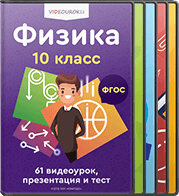Цели урока:
Обучающие:
- активизировать процесс запоминания излагаемого лексического материала путём комбинирования новых и ранее усвоенных лексических единиц;
- развивать слуховую оперативную память;
- формировать навыки неподготовленной речи.
Развивающие:
- обогащать и систематизировать лексический и грамматический материал
продуктивного плана;
- формировать коммуникативные умения: вести диалог, формулировать вопросы.
- развивать творческое мышление и творческие способности учащихся.
Воспитывающие:
- воспитать уважительное, толерантное отношение к чужому мнению;
- стимулировать интерес учащихся к изучению иностранного языка через интересные формы и методы работы.
- Воспитывать активность в решении коммуникативных и познавательно - поисковых задач.
Здоровьесберегающие:
- предупреждать переутомления детей путем смены деятельности.
Тип урока: введение и закрепление ЗУН учащихся.
Форма урока: традиционная
Технологии:
- технология развивающего, личностно - ориентированного обучения, коллективного взаимообучения.
Оборудование: раздаточный материал: тексты для чтения на английском языке: «Моя биография»; проекты учащихся.
Методы: объяснительно - иллюстративные (беседа, анализ таблицы, формулировка фактов);частично - поисковый (комментирование практических действий с выводом, выбор примеров - подтверждений с опорой на наглядность)
Приёмы: использование ТСО, самостоятельная работа по пройденному материалу, критического мышления.
Формы организации урока: коллективные, индивидуальные, групповые.
Ход урока
1. Организационная часть
1. 1. Greeting and Aim
Good morning, dear friends! Please take your seats! Let`s begin our lesson!
Today we are going to speak about yourselves: your interests, hobbies and plans for the future.
2. Актуализация опорных знаний.
2. 1. Check on Homework
What was your home task for today?
Read a composition “My best friend”.
3. Мотивация учебной деятельности
3. 1. Warming up
Now you are going to listen to a story in English. Try to understand it well. You will have to answer some questions about it. You will hear the story twice.
Перед первым предъявлением:
1) What is the story about? (It’s about the history of visiting cards. )
A visiting card, also known as a calling card, is a small paper card with one's name printed on it. They first appeared in China in the 15th century, and in Europe in the 17th century. The footmen of aristocrats and of royalty would deliver these first European visiting cards to the servants of their prospective hosts solemnly introducing the arrival of their owners.
Visiting cards became an indispensable tool of etiquette, with sophisticated rules governing their use. The essential convention was that one person would not expect to see another person in her own home (unless invited or introduced) without first leaving his visiting card for the person at her home. Upon leaving the card, he would not expect to be admitted at first, but might receive a card at his own home in response. This would serve as a signal that a personal visit and meeting at home would not be unwelcome. On the other hand, if no card was forthcoming in return, or if a card were sent in an envelope, a personal visit was thereby discouraged.
As an adoption from French and English etiquette, visiting cards became common amongst the aristocracy of Europe, and also in the United States. The whole procedure depended upon there being servants to open the door and receive the cards and it was, therefore, confined to the social classes which employed servants.
Some visiting cards included refined engraved ornaments, embossed lettering, and fantastic coats of arms. However, the standard form visiting card in the 19th century in the United Kingdom was a plain card with nothing more than the bearer's name on it. Sometimes the name of a gentlemen's club might be added, but addresses were not otherwise included. Visiting cards were kept in highly decorated card cases.
The visiting card is no longer the universal feature of upper middle class and upper class life that it once was in Europe and North America. Much more common is the business card, in which contact details, including address and telephone number, are essential. This has led to the inclusion of such details even on modern domestic visiting cards, a practice endorsed by modern books of etiquette, such as Debrett's New Etiquette.
Перед вторым предъявлением:
- What is the visiting card?
- What is its origin? / Where did it come from?
- When did it appear in Europe?
- What were they used for?
- How could the visiting cards be decorated?
- What is the business card?
4. Основная часть
4. 1. Reading
Read the text and fill in the gaps. What is the story about?
Let me introduce myself. I am Maria Sokolova. I am sixteen. I live in the village of Timonovo. People say that I am a pretty girl: I have got big blue eyes and long fair hair, but I try to colour my hair in red because my horoscope tells me to do it. My star sign is a lion and I have decided to do this experiment to attract good luck. So, as you can see, I am cheerful, funny and have a good sense of humour. I am optimistic about everything. I believe that all people must live in harmony and love each other.
I am in the 11th form of a secondary school. At the end of this school year I will have to pass my exams and I am a bit scared about it because these will be my first, important for my future life, exams. But I hope that everything will be all right because I study well. There are a lot of interesting subjects in my timetable this year, but English and mathematics are my favourite.
After finishing school I` d like to go on studying at a university and get a good knowledge of my future profession. I want to be an economist. I cannot say that my future profession is going to be very easy. It requires a specific mentality and a lot of special skills. I will study different subjects: economic policy, economic systems, trade, marketing, banking and other important matters. I think economics will teach me a new way of looking at the world. I hope that my choice of profession is right.
4. 2. Speaking and Writing
Now try to make a short visiting card according to the text you’ve just read. What information is missing? Your visiting card may include the following elements:
Name
Education
Occupation
Interests
Address
Telephone
E - mail
4. 3. Speaking
And now you are going to present your projects “My Visiting Card”
Examples, Pupil 1: “My Visiting Card”
I am Natasha Ivanova. I am from Ukraine. I live in Donetsk with my family.
We love and always help each other.
I also have a lot of friends. My friends are cheerful and generous people. We are never bored together.
I have some special interests. I like to play sports. I am fond of music.
Now I study at School № 1 in Donetsk.
I want to be a chef, because I like this profession. It is really important nowadays, besides it is necessary in everyday life. I enjoy cooking meals and it is interesting for me to learn about the process of cooking.
At our school we study different recipes and get various information about the history of cooking in different countries.
I hope I’ll become a great chef in future!
Student 2: “My Visiting Card”
My name is Anna Smirnova. I am sixteen years old. I was born on the 11th of May 1985 in Valuiky. It is a small town in Belgorod region. It is situated on two rivers: the Valui and the Oskol. You can see a lot of wonderful places and beautiful landscapes here in summer and spring.
There are some places to go to: a museum, a cinema, a park, a sport complex, a palace of culture, five libraries, a lot of cafes e t s.
I have lived in Valuiky since my childhood. My parents and my brother also live here.
My father`s name is Sergei Ivanovich. He works in a bank as a programmer. He is energetic and confident.
My mother`s name is Olga Anatolyevna. She is pretty and kind - hearted. My mother is a housewife. She takes care of the family and does everything to make our house cozy and comfortable.
I love and respect my parents because they are the closest and the dearest to my heart people. They are ready to help and teach me everything I ask them for. I feel that I am a lucky girl to have such nice parents.
Весь материал - смотрите документ.

 Получите свидетельство
Получите свидетельство Вход
Вход













 Урок английского языка "Дорога в жизнь. Моя визитная карточка" (40.14 КB)
Урок английского языка "Дорога в жизнь. Моя визитная карточка" (40.14 КB)
 0
0 2019
2019 410
410 Нравится
0
Нравится
0


